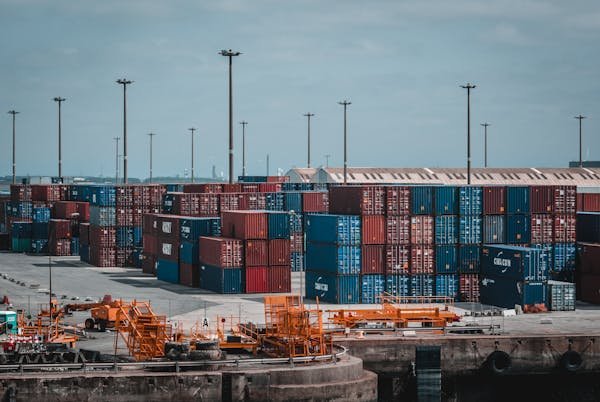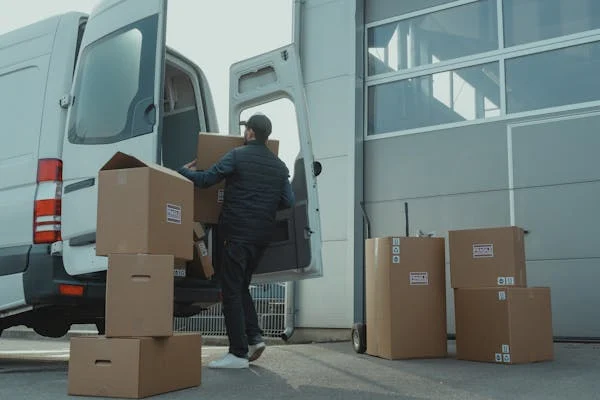Logistics is no longer just about moving goods from point A to point B. It’s about delivering transparency, trust, and timing. In this data-packed article, we explore the power of real-time tracking in global logistics—one key stat at a time. Each section dives deep into a major insight, offering actionable advice and a real-world lens on how businesses can harness tracking for growth, speed, and customer loyalty.
1. 93% of shippers and third-party logistics providers (3PLs) believe real-time tracking improves customer experience
Real-time tracking has become the cornerstone of modern logistics—and for good reason. Nearly all shippers and third-party logistics providers agree: giving customers visibility into their shipments dramatically improves satisfaction.
Why this matters more than ever
Today’s customers don’t just want their packages fast; they want to know where they are every step of the way. Whether it’s a small e-commerce order or a multi-million dollar industrial shipment, visibility builds confidence.
Without real-time tracking, customers are left in the dark. They make phone calls, send emails, and raise tickets. This not only clogs your support channels but damages trust.
Building experience through transparency
When customers can see their shipment in real-time, they feel in control. The anxiety of “where’s my order?” disappears. And even if there are delays, knowing the reason in advance makes a huge difference.
Tracking also sets the tone. It shows your business is modern, trustworthy, and proactive. It says: “We care enough to keep you in the loop.”
How to implement it right
To truly improve customer experience, tracking must be:
- Real-time (not laggy or delayed)
- Simple to understand
- Mobile-optimized
- Integrated with communication channels (like SMS or email alerts)
Don’t just give customers a code. Give them a timeline, a visual journey, and proactive alerts.
Tactical advice
- Partner with tech-savvy logistics companies that offer API-based tracking solutions.
- Offer a branded tracking page to boost recall.
- Use tracking insights to automate follow-up messages and loyalty offers.
2. 72% of logistics companies use real-time tracking to optimize delivery routes
More than two-thirds of logistics firms rely on real-time tracking to refine routes. That’s not just about saving fuel—it’s about making smarter decisions every mile.
Rethinking logistics as a living system
In the past, route planning was static. You mapped out a path in the morning and hoped for the best. Today, that’s outdated.
Real-time tracking gives dispatch teams the power to adapt. Traffic jam? Reroute. Bad weather? Shift direction. Empty return leg? Find a pickup nearby.
Route optimization goes beyond cost
Yes, you save fuel and reduce idle time. But you also reduce driver stress, improve delivery ETAs, and serve more customers in a day. That’s a full-stack improvement.
Plus, fewer miles driven means lower emissions—a win for sustainability.
Tactical steps to make this work
- Use GPS-enabled fleet software that includes AI-based rerouting
- Feed tracking data into your delivery planning tools
- Train drivers to respond to real-time route changes
Tracking isn’t just a tool—it’s a control tower. Use it to steer smarter.
3. 89% of supply chain leaders state that real-time visibility is critical to supply chain success
It’s no longer a nice-to-have—it’s mission critical. Supply chain leaders across the board see real-time visibility as non-negotiable.
Why visibility is a strategic asset
Real-time tracking doesn’t just benefit the end user. It empowers procurement, manufacturing, warehousing, and sales teams.
You can’t manage what you can’t see. And in a global supply chain, things change by the hour.
Visibility means knowing which container is delayed at port, which truck broke down, and which shipment needs backup. That intelligence can save deals, preserve SLAs, and prevent stockouts.
Building a control tower mindset
More companies are building supply chain control towers—central dashboards fed by real-time data. These aren’t just dashboards. They’re decision engines.
Real-time visibility feeds:
- Dynamic inventory planning
- Emergency supplier rerouting
- Live risk assessments
Without it, you’re guessing. With it, you’re orchestrating.
Tips to turn visibility into an advantage
- Connect your tracking tools to ERP, WMS, and CRM systems.
- Build alert systems for exceptions—not just updates.
- Use predictive tracking to foresee delays before they hit.
Visibility lets you see what’s happening—and what’s coming.
4. 57% of businesses report reduced delivery delays due to real-time tracking technologies
Delays are a logistics killer. They disrupt inventory flow, upset customers, and cost money. But more than half of businesses using real-time tracking have seen these delays shrink.
Why tracking leads to speed
Real-time data removes guesswork. Drivers don’t have to call dispatch for updates. Managers can see where things are stuck. Customers aren’t waiting blindly.
You get ahead of problems instead of reacting to them late.
Example: If you know a truck will be late, you can reschedule unloading docks. That’s time saved at every link in the chain.
Fixing the small things early
Sometimes, it’s the little snags—a wrong turn, a flat tire, or a full loading dock—that snowball into big delays. Real-time tracking lets you spot them early and solve them fast.
How to set up your system
- Use geofencing to trigger alerts when vehicles enter or leave locations
- Monitor driver movement and idle time
- Set delay thresholds and notify teams before deadlines are missed
Faster isn’t about pushing harder—it’s about seeing smarter.
5. Companies using real-time tracking report a 20% increase in on-time deliveries
It’s one thing to ship fast. It’s another to ship on time. Real-time tracking has driven a consistent 20% boost in on-time performance for companies that use it right.
What “on-time” really means to a business
Being on time isn’t just about satisfaction. It’s about contracts, penalties, inventory sync, and downstream workflows.
Missed deliveries create ripples. An hour late on one end could mean a shift delay at a factory or a sales outage at a store.
Real-time tracking doesn’t just improve punctuality—it proves it. You can show up on time and prove it with a timestamp.
Key drivers of on-time success
- Route correction through live data
- Pre-scheduling drop-offs based on live ETA
- Predictive delay management
- Better driver accountability
It’s not just about watching. It’s about adjusting, informing, and confirming every step.
How to replicate the success
- Choose logistics partners with real-time tracking built-in
- Use data to track delivery windows and adjust service standards
- Integrate tracking data into your customer communication loop
The result? Fewer misses, fewer escalations, and happier customers.
6. Real-time tracking reduces average delivery time by 15% globally
When you shave even a few minutes off each delivery, the impact across your entire logistics network is massive. Real-time tracking is helping companies around the world reduce delivery times by as much as 15%.
Speed isn’t always about driving faster
The key to faster delivery isn’t always speed—it’s efficiency. Real-time tracking helps logistics teams find the most efficient path, avoid delays, and reroute when necessary.
Take city deliveries, for example. A driver stuck in traffic for 30 minutes due to an accident could have easily avoided that delay if the system flagged the congestion early. Real-time GPS tracking helps anticipate and navigate around problems—before they become costly.
The invisible time-eaters
Small inefficiencies add up: waiting at docks, missed delivery windows, or confusion over addresses. Tracking data helps identify and eliminate these bottlenecks.
Better yet, it helps companies adjust in real time. If a customer isn’t available at the destination, the driver can be re-routed instead of wasting valuable hours.
Actionable strategies for quicker deliveries
- Use dynamic dispatching to assign tasks based on current vehicle location, not planned schedules.
- Implement geo-based ETA tracking for proactive updates and prep at delivery sites.
- Monitor delivery time data and regularly refine your delivery window estimates.
When you improve visibility, you improve velocity.
7. 64% of customers expect real-time updates on the status of their shipments
Customers don’t just want to receive their order. They want to know where it is every step of the way. In fact, nearly two-thirds now expect real-time tracking as a standard feature.
The psychology of tracking
Waiting in silence creates anxiety. Giving customers real-time updates gives them peace of mind and control. It’s the difference between wondering “Will it come today?” and confidently planning their day around a known ETA.
Plus, it creates trust. Even if there’s a delay, transparency builds goodwill.
The shifting definition of service
Providing a tracking number used to be enough. Not anymore. Customers now expect:
- Push notifications when an item is shipped, en route, or arriving
- Live maps showing location
- Proactive alerts for delays or changes
Anything less feels outdated.
How to meet customer expectations
- Choose tracking tools that offer APIs or widgets you can embed into your site or app.
- Send SMS/email updates at key milestones: dispatch, in-transit, near-arrival, delivered.
- Add estimated delivery windows based on real-time traffic and distance.
It’s not just about tracking—it’s about reassurance.
8. 77% of logistics firms say tracking tech improved warehouse efficiency
Real-time tracking doesn’t stop at the road. It’s improving warehouses too—streamlining inbound and outbound logistics and reducing wasted time.
How tracking supports warehouse flow
Knowing exactly when a truck or container will arrive means teams can plan dock assignments, staffing, and space more accurately.
Instead of trucks queuing outside the warehouse, real-time ETA allows for timed unloading slots. That reduces bottlenecks, overtime, and manual coordination.
For outbound shipments, tracking ensures the right package is handed off to the right carrier, on time.
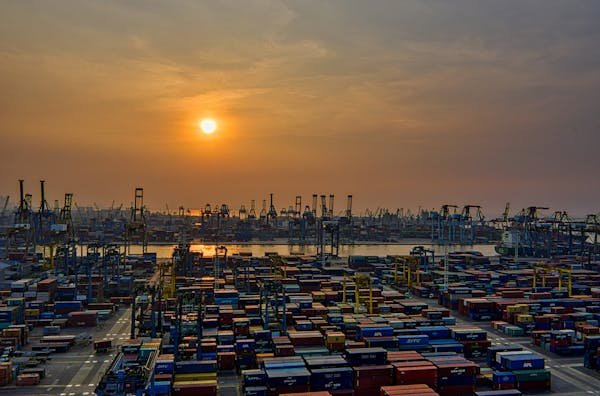
Tracking improves inventory planning too
If you know a shipment is delayed, you can hold back on sales or inform fulfillment teams. If it’s ahead of schedule, you can get it stocked and shipped faster.
All of this improves throughput without increasing labor.
Boosting warehouse ROI with tracking
- Integrate your transportation management system (TMS) with warehouse software.
- Use arrival data to dynamically assign loading/unloading bays.
- Train staff to use tracking data to prep orders in advance.
The warehouse is only as fast as its data. Feed it real-time tracking, and everything speeds up.
9. 85% of logistics decision-makers increased investment in tracking tech post-COVID-19
The pandemic revealed a painful truth—companies without real-time visibility suffered most. Since then, tracking technology has seen a major surge in adoption.
Why the urgency?
During COVID, logistics disruptions were frequent and unpredictable. Borders closed. Flights were canceled. Demand spiked and dipped overnight.
Businesses that could see their supply chain in real time adapted fast. Those that couldn’t? They were left behind.
Resilience through visibility
Real-time tracking doesn’t just help when things are going well. It’s a lifeline when things fall apart. Decision-makers now realize that tracking isn’t just a feature—it’s an insurance policy.
And that’s why investments spiked.
Smart ways to invest in tracking tech
- Start with core routes or high-value cargo.
- Choose scalable platforms that integrate with existing systems.
- Focus on mobile-first tools that drivers and warehouse workers can use on the go.
Tracking is no longer a luxury. It’s a baseline for agility.
10. Real-time tracking helped reduce theft in transit by 18% globally
Cargo theft is a global issue—and it’s costly. But real-time tracking is proving to be a powerful deterrent, reducing in-transit theft by nearly a fifth.
Why theft prevention matters
Beyond financial loss, cargo theft causes delivery delays, damages customer trust, and increases insurance premiums.
Real-time tracking offers a digital security blanket. It turns every shipment into a monitored asset.
How tracking thwarts theft
- GPS trackers enable geofencing. If a shipment leaves a designated route or stops unexpectedly, alerts are triggered.
- Some systems offer tamper detection, letting you know if a container is opened.
- Faster response times mean law enforcement can act while theft is in progress.
The mere presence of visible tracking deters many theft attempts.
Best practices for secure tracking
- Use discreet tracking devices in high-value shipments.
- Set route boundaries and trigger alerts for off-path movement.
- Partner with security response firms in high-risk zones.
Tracking doesn’t just guide—it guards.
11. 69% of logistics firms use GPS-enabled trackers for fleet management
Managing a fleet is no easy task—especially when vehicles are spread across regions or continents. That’s why more than two-thirds of logistics firms now rely on GPS-enabled trackers to keep tabs on every vehicle.
Why GPS tracking matters in fleet operations
Fleet management without GPS is like trying to play chess blindfolded. You can’t make informed decisions unless you know exactly where each piece is.
With GPS tracking, fleet managers can see every truck’s location, route, speed, and idle time in real time. This level of detail opens the door to smarter decisions and more efficient operations.
Where GPS tracking makes the biggest impact
- Route efficiency: If a driver is off-route or stuck in traffic, you can act immediately.
- Fuel savings: Monitoring behavior like idling and speeding helps cut costs.
- Driver performance: Real-time feedback and reporting lead to safer, more responsible driving.
- Compliance: Many countries require GPS logs for regulatory reporting.
GPS makes managing a large fleet feel less like firefighting and more like orchestration.
Getting more from GPS technology
- Use historical data to spot trends and improve routing decisions.
- Set up real-time alerts for unauthorized stops or route deviations.
- Combine GPS data with delivery management systems for end-to-end visibility.
The modern fleet isn’t just about wheels—it’s about data.
12. 74% of companies with advanced tracking tech saw fewer shipment disputes
Disputes are common in logistics. A customer says the shipment was late or damaged. The shipper says otherwise. Without evidence, it’s a standoff.
But nearly three-quarters of companies using advanced tracking technology have reduced these disputes. Here’s how.
Why tracking ends arguments
Advanced tracking doesn’t just show where a shipment is—it provides a timeline of actions. You get:
- Timestamps for pick-up and delivery
- Temperature data for sensitive goods
- Proof-of-location with GPS
- Digital signatures or photo confirmations
This kind of evidence leaves little room for disagreement.
Benefits go beyond resolution
When you can prove your performance, you gain customer trust and reduce claims. You also get paid faster, as fewer shipments are withheld for investigation.
It also sharpens your internal accountability. When something does go wrong, tracking data helps pinpoint the cause.
Making your tracking ironclad
- Invest in sensors for temperature, humidity, and shock where needed.
- Require photo-based proof-of-delivery on all shipments.
- Store tracking logs securely for easy reference and audits.
In logistics, truth is in the tracking.
13. Real-time tracking tech has led to a 25% decrease in customer service calls
One of the hidden costs in logistics? Customer support. Every “Where is my order?” call eats up time and resources. But with real-time tracking, those calls drop—by as much as 25%.
Why calls happen in the first place
Uncertainty is the root cause. When customers don’t know what’s going on, they reach out. Every delay, missed delivery window, or unclear timeline triggers a ticket.
Real-time tracking shifts the communication model from reactive to proactive.
Less time answering, more time improving
When your support team isn’t buried in basic queries, they can focus on solving bigger issues, analyzing feedback, and improving the overall experience.
It also improves customer satisfaction. People appreciate getting answers before they ask.
How to reduce support volume with tracking
- Automate notifications at every step: shipped, out for delivery, arrived.
- Include real-time maps in your customer dashboard or app.
- Use chatbots to fetch tracking info instantly for self-service.
You don’t need to build a bigger support team. You need smarter tools.
14. 83% of global logistics companies use IoT-based real-time tracking solutions
The Internet of Things (IoT) has taken tracking to a whole new level. And over 80% of global logistics firms are already using it.
How IoT is transforming logistics
IoT devices go beyond simple GPS. They monitor temperature, pressure, vibration, tilt, light, and even open/close activity in real time.
This is a game-changer for sectors like pharmaceuticals, food, high-value goods, and electronics.
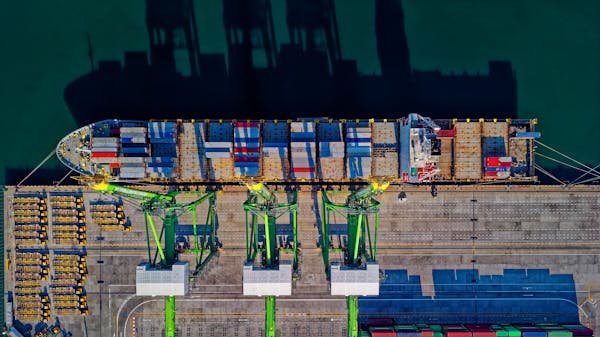
Examples of IoT in action
- A vaccine shipment is continuously monitored for temperature breaches.
- A container of luxury electronics triggers an alert if it’s opened mid-route.
- A produce shipment adjusts its route dynamically to avoid overheating.
This isn’t just tracking. It’s real-time condition monitoring.
How to get started with IoT tracking
- Identify critical cargo types where conditions matter.
- Choose sensors that fit your product’s needs—don’t overbuy.
- Use a dashboard that consolidates multiple sensor inputs for easy oversight.
IoT turns your shipments from dumb boxes into data-rich assets.
15. Real-time tracking has cut idle fleet time by 30% in urban logistics
Urban logistics is tricky—tight roads, traffic, time windows. But real-time tracking has helped many companies cut fleet idling time by a third.
Why idle time is a silent killer
When trucks sit still, they burn fuel, delay deliveries, and rack up operating costs. Multiply that across hundreds of vehicles, and the cost skyrockets.
Real-time tracking allows dispatchers to reassign deliveries, redirect idle trucks, or adjust plans on the fly.
Idle time isn’t just about traffic
Sometimes, it’s waiting at docks, dealing with paperwork, or searching for parking. Tracking helps reveal these friction points.
Once you know where idle time happens, you can act.
Tips for reducing idle time
- Use traffic-aware routing tools to avoid congestion in real time.
- Schedule delivery windows precisely and confirm dock availability.
- Track engine-on vs. vehicle-movement time to pinpoint true idle patterns.
Idle time used to be accepted. Now, it’s a metric you can beat.
16. 58% of logistics providers offer mobile apps with real-time tracking features
Mobile apps aren’t just for customers—they’re a critical tool for drivers, warehouse teams, and logistics coordinators. Over half of logistics providers now offer real-time tracking directly through mobile apps.
Why mobile tracking is essential
Today’s logistics operations are fast-moving and spread across locations. Your team isn’t sitting at desks—they’re in trucks, warehouses, and delivery points.
Having tracking tools on mobile means decisions can be made instantly, whether it’s a route change, customer update, or shipment check-in.
What a great mobile tracking app includes
- Live GPS map view of all fleet units
- Status updates for shipments
- Push notifications for delays or arrivals
- Driver check-in/out logs
- Delivery confirmation uploads (signatures, photos)
This functionality turns every smartphone into a logistics command center.
How to use mobile tracking to your advantage
- Roll out the app company-wide with training and incentives.
- Sync the mobile app with customer-facing updates for full transparency.
- Use data from the app to improve KPIs like delivery time, idle time, and fulfillment rate.
Your team already has the tools in their pockets. The right app just makes them smarter.
17. 60% of retail brands say real-time logistics visibility is key to omnichannel success
Retail is more complex than ever. Online, in-store, curbside, B2B, B2C—it’s all part of the mix. For 60% of retail brands, real-time logistics visibility is the glue that holds it all together.
What omnichannel really demands
When customers can order from anywhere and expect delivery anywhere, logistics has to be hyper-coordinated.
You can’t afford stockouts, delayed fulfillment, or unclear ETAs. Real-time tracking bridges the gap between demand and delivery.
Visibility enables flexibility
Let’s say a product is selling fast online but sitting on shelves in another region. Real-time tracking helps identify where stock is located and how fast it can be moved.
It also allows better promise dates for online shoppers—reducing cart abandonment and increasing loyalty.
Tactics to build omnichannel success with tracking
- Integrate your inventory system with your logistics tracking tools.
- Use real-time ETAs to set realistic delivery timelines at checkout.
- Give customer service teams access to tracking dashboards for faster resolution.
The future of retail isn’t online or offline—it’s connected. And that requires visibility from end to end.
18. The global market for real-time supply chain visibility reached $3.8 billion in 2024
This isn’t a niche trend—it’s a booming industry. The market for real-time visibility tools in supply chains has ballooned, hitting nearly $4 billion last year.
What’s driving this growth?
- Increased customer demand for transparency
- Supply chain disruptions from global events
- E-commerce explosion post-2020
- Technology advancements in IoT, AI, and data analytics
Real-time visibility is no longer optional—it’s the backbone of modern supply chains.
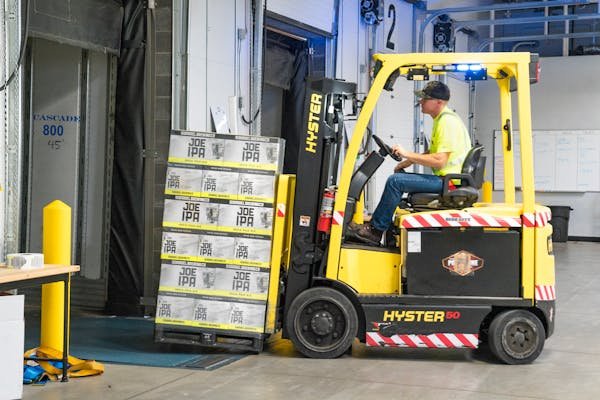
What this means for businesses
More investment means better tools. More competition means more affordable options. And more adoption means your competitors are likely already on board.
If you’re not exploring or upgrading your visibility tech, you risk falling behind.
How to join the visibility revolution
- Start small—track one part of your supply chain before scaling up.
- Choose platforms that offer end-to-end solutions, not just point tools.
- Use visibility data to make proactive, not reactive, decisions.
This market growth isn’t just about software. It’s about shifting how global trade works.
19. 80% of fleet operators use tracking data for predictive maintenance
Real-time tracking isn’t just for knowing where your trucks are—it’s also helping you know when they’ll break down. A full 80% of fleet operators now use tracking data to predict maintenance needs before they become breakdowns.
Why predictive maintenance matters
Unplanned breakdowns are expensive. They delay shipments, cause ripple effects in the supply chain, and strain customer relationships.
But if you know a vehicle is trending toward a failure—due to tire pressure, engine hours, or fuel efficiency drops—you can act before it fails.
Tracking the right signals
- Mileage and engine hour thresholds
- Fuel consumption spikes
- Idle time and harsh driving behavior
- Tire and brake wear trends
These signals, when tracked in real time, allow for smarter scheduling of maintenance without disrupting operations.
Steps to implement predictive maintenance
- Choose tracking tools that include engine diagnostics (OBD integration).
- Set alert thresholds for key maintenance metrics.
- Sync maintenance logs with vehicle tracking profiles.
Keep your fleet moving—and keep surprise repairs off your schedule.
20. 50% of logistics costs are reduced by using real-time tracking and analytics together
Half. That’s how much companies are saving on logistics costs when they combine real-time tracking with analytics. It’s not just about seeing where things are—it’s about learning from it.
Why tracking without analytics falls short
Tracking shows movement. Analytics shows meaning.
You need both to spot patterns, eliminate waste, and improve performance. For example, tracking shows a delivery delay. Analytics tells you it happens every Monday in Zone 3 due to traffic congestion near a warehouse.
That’s actionable insight.
What analytics can do for logistics
- Optimize delivery schedules based on peak performance times
- Spot high-cost lanes or underutilized assets
- Reduce return rates by understanding delivery failures
- Predict costs for better budgeting
When you turn tracking data into strategy, savings follow fast.
How to unlock these savings
- Use tracking tools with built-in analytics dashboards.
- Assign a data analyst or team member to monitor trends weekly.
- Set improvement targets—like reducing cost per delivery by X%—based on insights.
Tracking gives you the facts. Analytics gives you the power to act on them.
21. 90% of logistics managers prioritize real-time tracking in tech upgrades
Technology budgets are limited, so where logistics managers choose to spend speaks volumes. And 9 out of 10 are prioritizing real-time tracking in their next round of upgrades.
Why tracking is the priority
Tracking touches every part of the logistics flow. It improves planning, customer communication, route optimization, cost control, and compliance.
It also adds measurable ROI. Unlike some upgrades that are nice-to-have, tracking systems show real, immediate benefits—reduced delays, fewer disputes, and improved asset utilization.
What makes tracking tech a smart investment
- Easy integration with existing TMS, WMS, or ERP systems
- Mobile and web interfaces for all stakeholders
- Real-time dashboards with alert capabilities
- Scalability across fleets, warehouses, and locations
Once tracking is upgraded, other tech systems become more valuable. It acts as a foundation.
Smart ways to plan a tracking upgrade
- Map your current visibility gaps—do you lack real-time data on delivery, warehousing, or international freight?
- Choose tools that cover those blind spots first, then scale across the rest.
- Ensure your tracking platform offers API access to allow smooth integration down the line.
Prioritize tracking, and you’ll find your entire tech stack becomes more effective.
22. Companies with end-to-end visibility platforms achieve 28% faster turnaround
Speed isn’t just about delivery—it’s about how quickly you can move from one order to the next. Companies using complete end-to-end tracking platforms are seeing a 28% faster turnaround rate.
What is end-to-end visibility?
It means knowing where everything is—from raw materials to finished goods to returned products. And not just knowing—but seeing it in real time.
This visibility cuts out guesswork, phone calls, and delays between departments or partners. Everyone operates on the same timeline.
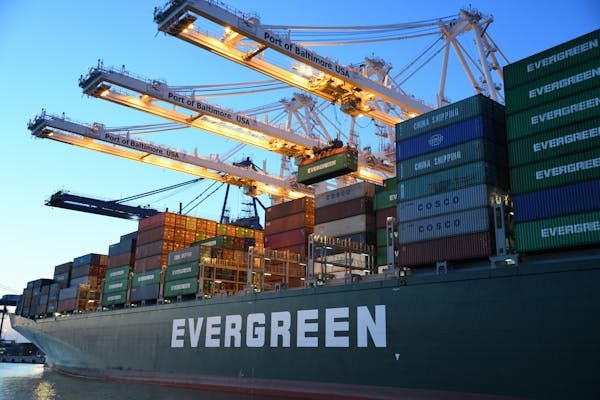
Why turnaround time matters
Faster turnaround means:
- More orders fulfilled with the same resources
- Higher customer satisfaction
- Less time spent troubleshooting
- Better cash flow through faster order-to-cash cycles
In a competitive market, shaving hours—even minutes—off turnaround can be the difference between winning or losing a customer.
How to speed things up with full visibility
- Connect your procurement, logistics, and fulfillment tools into one tracking dashboard.
- Give all internal teams access to the same live shipment and inventory data.
- Set SLAs based on visibility metrics, not estimates.
If your entire operation can “see” together, it can move together.
23. 62% of B2B customers are more loyal to vendors who provide real-time tracking
Loyalty in B2B relationships doesn’t just come from price or product. In fact, for 62% of B2B buyers, real-time tracking is a major driver of repeat business.
Why B2B buyers value tracking
B2B purchases are often time-sensitive and mission-critical. A factory waiting for parts, a hospital needing equipment, a store awaiting a restock—these buyers need more than just delivery. They need visibility.
When a vendor offers real-time tracking, it removes friction from the buying experience. It reduces panic, improves trust, and signals professionalism.
Tracking builds confidence
Imagine being able to show your own customers or your leadership team exactly when supplies will arrive. That’s a competitive advantage in itself.
It also means fewer “where’s my order” calls internally—which improves the buyer’s operations too.
How to build B2B loyalty with tracking
- Provide tracking portals that B2B clients can log into themselves.
- Offer proactive alerts via email, Slack, or SMS for critical milestones.
- Use tracking data to run quarterly performance reports for B2B clients.
Make it easy for your buyers to look good, and they’ll keep coming back.
24. 78% of freight forwarders rely on real-time data for ETA accuracy
Freight forwarding is all about coordination. And 78% of forwarders now say they rely heavily on real-time tracking to provide accurate estimated times of arrival (ETAs).
Why ETA accuracy is essential
For importers, manufacturers, and distributors, even a few hours of delay can disrupt production lines or miss sales windows. Forwarders who provide accurate ETAs become trusted advisors—not just middlemen.
Without real-time data, ETAs are just educated guesses. With real-time tracking, they’re reliable metrics.
How forwarders use real-time data
- Cross-checking carrier milestones against live location data
- Alerting clients to delays with updated timelines
- Re-routing or re-prioritizing shipments as conditions change
This transparency builds long-term relationships with clients.
Tips for improving ETA accuracy
- Integrate multiple data sources: GPS, carrier updates, port activity, and customs status.
- Use machine learning to refine your ETA predictions based on past patterns.
- Display ETA changes in real time on client dashboards or portals.
In freight, trust is earned by timing. And tracking helps you keep it.
25. 46% reduction in lost shipments reported by firms using advanced tracking systems
Lost shipments are a nightmare. They cost money, time, and reputation. But nearly half of these incidents disappear when companies adopt advanced tracking systems.
What causes shipment loss?
It’s rarely outright theft. It’s usually paperwork errors, route confusion, warehouse misplacement, or miscommunication during handoffs.
Advanced tracking systems eliminate these gaps. Every touchpoint is logged, every movement is monitored, and every handoff is traceable.
How advanced tracking prevents loss
- Real-time location tagging at each stage of the journey
- Chain-of-custody tracking between carriers, warehouses, and last-mile partners
- Alerts if shipments are stuck, detoured, or delivered to the wrong location
It’s accountability at scale.
Best practices to reduce loss rates
- Use RFID, barcode scanning, or GPS tagging at every transfer point.
- Require proof of delivery with digital photos or signatures.
- Monitor exception reports daily to intervene early.
You can’t prevent what you can’t see. But with the right system, nothing goes unseen.
26. Real-time tracking improves driver safety by 22% through behavior monitoring
Safety isn’t just about avoiding crashes. It’s about creating an environment where drivers make better decisions every time they’re behind the wheel. Real-time tracking has helped companies improve driver safety by 22%—a massive win for both people and business.
Why tracking makes drivers safer
Modern tracking doesn’t just monitor location—it keeps an eye on how the vehicle is being driven. Are there harsh brakes? Rapid acceleration? Speeding? These behaviors aren’t just dangerous—they’re costly.
When drivers know their driving habits are visible, they tend to drive more carefully. And when fleet managers use the data to coach drivers rather than punish them, the safety culture improves dramatically.
What gets measured improves
Tracking tools now offer detailed driver scorecards. These highlight areas for improvement like:
- Sudden stops
- Harsh cornering
- Extended idling
- Route deviations
Over time, companies can see a clear drop in risky behaviors—and fewer accidents, tickets, and insurance claims.
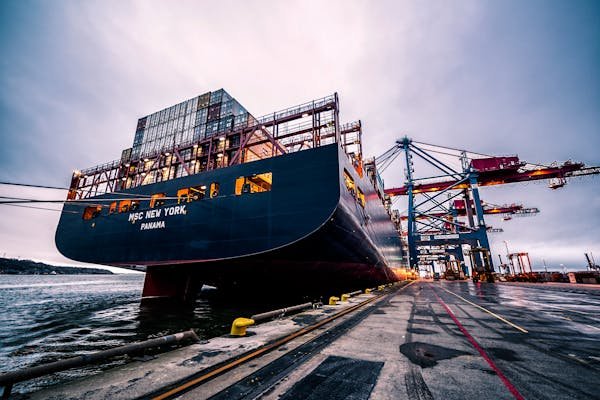
How to improve safety through tracking
- Use dash cams and telematics together for full visibility.
- Reward safe driving habits through bonuses or recognition.
- Run monthly safety reviews based on tracking data.
Safety starts with visibility. Give your drivers the data to improve, and the tools to succeed.
27. 88% of logistics startups incorporate real-time tracking in their core offering
Startups are often the first to adopt new technology—and nearly 9 out of 10 logistics startups now build real-time tracking into their platform from day one.
Why startups lead with tracking
They’re not held back by legacy systems. Instead of building a business that adds tracking later, they embed it into every function—pricing, routing, fulfillment, and support.
This helps them compete with larger players by offering a more transparent, flexible, and tech-driven experience from the start.
How tracking adds value to startups
- Builds instant trust with early customers
- Reduces operational complexity by automating visibility
- Scales easily without extra overhead
For startups looking to attract investment, having built-in tracking also shows you’re thinking long-term about logistics transparency and efficiency.
If you’re a startup founder
- Don’t treat tracking as a feature—make it foundational.
- Choose tracking platforms with open APIs and easy onboarding.
- Offer customers branded tracking dashboards early on.
Start lean. Start smart. Start visible.
28. 35% of cross-border shipment delays are mitigated through tracking insights
International shipping comes with its own maze of issues—customs, inspections, port delays, carrier handoffs. But 35% of cross-border delays are being successfully reduced thanks to smarter tracking insights.
Why cross-border needs visibility more than ever
Delays aren’t just annoying. They hurt revenue, disrupt global supply chains, and can damage compliance records with large customers.
With real-time tracking across borders, businesses can:
- Anticipate customs slowdowns
- Adjust for local holidays or port backlogs
- Reroute goods while in transit
Tracking becomes a tool for not just reacting to problems, but for preventing them.
Building a cross-border tracking system
- Work with international logistics partners who share tracking data openly.
- Integrate local carrier tracking tools into your main platform.
- Monitor time-in-transit across borders and identify delay hotspots.
Borders don’t have to be bottlenecks—not if you can see through them.
29. Real-time visibility platforms reduce manual check-ins by 41%
How many hours does your team spend checking on deliveries, calling drivers, updating spreadsheets, or answering emails? Real-time visibility platforms are cutting all of that by 41%.
Why manual check-ins still happen
Without live data, teams fall back on calls, texts, and email chains to get updates. That’s slow, error-prone, and frustrating.
Tracking platforms give everyone—from dispatchers to sales reps—access to the same live info, instantly. No need to chase anyone down.
Benefits beyond saved time
- Fewer internal miscommunications
- More accountability across teams
- Less stress and burnout in logistics roles
- More consistent customer communication
It’s not just faster—it’s smoother.
How to reduce manual tracking work
- Give all stakeholders live access to your tracking system.
- Automate alerts for delivery milestones and delays.
- Build simple dashboards for teams to check shipment status themselves.
When you stop chasing trucks, you start building better processes.
30. 92% of logistics firms consider tracking and visibility their top digital priority
This is the ultimate proof: tracking and visibility aren’t side projects anymore. For 92% of logistics companies, they are now the #1 digital priority.
Why the shift?
The pandemic was a wake-up call. So were the supply chain disruptions that followed. Businesses learned that without visibility, they were flying blind. The risk was too high.
Today, tracking is not just about GPS. It’s about building a connected, data-rich logistics system that can adapt in real time.
Tracking is now core strategy
- It’s in board meetings.
- It’s part of investor pitches.
- It’s baked into customer SLAs.
Companies are no longer asking “Should we implement tracking?” They’re asking, “How fast can we scale it across every route, warehouse, and region?”

How to make tracking your digital priority too
- Appoint a visibility lead—someone who owns tracking implementation and evolution.
- Budget for platform upgrades and integrations in your tech roadmap.
- Treat tracking data as strategic—review it weekly at the leadership level.
Visibility isn’t a feature. It’s the future.
Conclusion
The logistics world is evolving—and it’s doing so at the speed of data.
As we’ve seen across all 30 of these powerful statistics, real-time tracking isn’t just a nice addition to your tech stack. It’s the foundation for smarter, faster, safer, and more customer-centric logistics.







